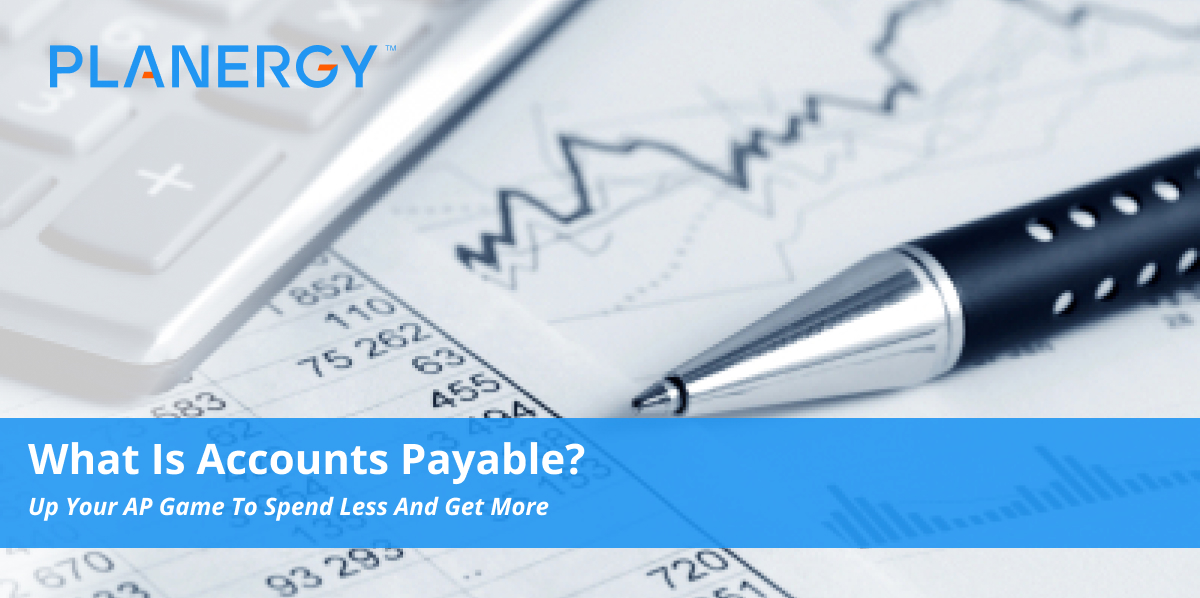Everyone has to pay the piper sometime. For businesses, settling up your tab with the vendors who provide goods and services for your company is handled by your accounting department via accounts payable (AP).
How quickly, accurately, and completely you pay your vendors can have a lasting impact on your business. Understanding accounts payable and ensuring it operates at peak efficiency is essential to keeping your company profitable and competitive.
Accounts Payable Definition and Examples
From an accounting standpoint, accounts payable (also known simply as AP or payables) are a record of your business’ short-term debt to your vendors and other creditors. You may also hear “accounts payable” used to refer to the payable department handling these accounts, while “payables” or “account payable” (in the singular) can also refer to each individual entry within the AP ledger.
Accounts payable are short-term debts on your balance sheet, much like payroll, short-term loans, and tax payments. They don’t cover long-term debts like retirement dispersals, income taxes, or lease payments. They’re the counterpart to account receivables, which are journal entries recording payments owed to your company, rather than payments owed by your company to its suppliers.
Payables, each connected to a specific invoice, are recorded as current liabilities on your company’s balance sheet. So if, for example, you buy a crate of water for the break room, you don’t pay the vendor when the water arrives. Instead, you’ll receive an invoice from the supplier (ideally cross-referenced to a matching purchase order), marked with a specific due date. You record the invoice as a payable as an outstanding short-term liability to that particular supplier, with “short-term” usually indicating a term of one year or less.
This accounting method is essential if your company uses accrual accounting. Payables are recorded when you receive the invoice, and not when payment clears. Let’s say you’ve purchased $750 worth of office supplies. When you receive the invoice, the payable is recorded like this:
DEBIT (AP): $750
CREDIT (Office Supplies): $750
Office supplies are recorded as a credit because your company has gained assets. The corresponding debit entry offsets this acquisition by the amount owed to the provider.
A quick glance at AP ledger will show the outstanding amount (and all other short-term liabilities owed to vendors) until a check is cut for the amount due, at which time another entry will be recorded, like so:
DEBIT (Checking): $750
CREDIT (AP): $750
In this transaction, assets are transferred (in the form of cash) from your company to the vendor, and a credit added to AP corresponding to the debit created by the invoice. Together, these two entries are an example of double-entry bookkeeping. The two entries are connected and enable you to track related liabilities and credits easily when preparing financial statements.
The measure of your company’s ability to pay its creditors in a given accounting period, as determined by your liquid assets and current liabilities, is called the accounts payable turnover ratio. A high ratio is better than a low one for most businesses, since it shows you can quickly and consistently meet your financial obligations.
Accounts payable also uses what’s known as an ageing method to break payables into specific “buckets” (usually 30 day periods) based on the age of the invoice and its status as paid or unpaid, and whether or not it’s overdue.
As time passes, payables that haven’t yet been paid are moved to new buckets.
You can see this method at work in the following example:
| Vendor (Payee) | Current | Overdue (1-30 Days) | Overdue (31-60 Days) | Total |
| ElectroPro | $250.00 | $250.00 | ||
| SKOR Group | $475.50 | $475.50 | ||
| OfficeCo | $324.50 | $324.50 | ||
| Bob’s HVAC | $527.40 | $527.40 | ||
| Imperial Carpet | $72.60 | $72.60 | ||
| $1050.00 | $527.40 | $72.60 | 1650.00 |
If your AP function is out of control—e.g., you’re frequently late or even missing payments to vendors—you might find your problems compounded by high interest rates, penalties, and, in extreme cases, the loss of your account with a key vendor.
Why Accounts Payable Matter
Keeping accurate and timely records of current liabilities outstanding—and making sure you’re paying your accounts on time— is important for several reasons. In addition to ensuring your profitability and supporting positive relationships with your vendors, properly managed accounts payable help you keep control of your cash flow. If you consistently maintain high outstanding AP balances in your general ledger and have little cash on hand for an extended period of time, you’re running in the red.
If your AP function is out of control—e.g., you’re frequently late or even missing payments to vendors—you might find your problems compounded by high interest rates, penalties, and, in extreme cases, the loss of your account with a key vendor. Conversely, well-managed accounts payable give you the breathing room to pay on time or, best of all, early. When you’re a reliable customer who consistently meets your financial obligations, vendors will be happy to accommodate your requests for better rates, and offer special discounts and incentives.
Having transparent and well-planned accounts payable is also critical to financial planning for larger initiatives within your company. If you’re scrambling to cover your AP, you might find yourself without the working capital required to upgrade essential equipment, buy much-needed raw materials, or add new staff to support your growing customer base.
Accounts Payable Best Practices
Nobody likes to see cash leaving their coffers, but following some simple and effective best practices for accounts payable can help ensure every dollar spent produces maximum value for your business.
Take Advantage of Technology
Staying up-to-date on AP and other financial concerns doesn’t have to be painful. Thanks to modern software solutions equipped with artificial intelligence and AP automation, you can create a centralised and streamlined AP process. Set reminders to take advantage of discounts for early payment, monitor your cash flow in real time, and take control of your entire Procure-to-Pay (P2P) function to trim rogue spending and simplify everything from vendor management to approvals, payments, and financial analysis and reporting.
Pay Strategically
Negotiate with suppliers for the best possible terms, and stick to them. After a year of regular payments, consider renegotiating those terms for more favourable time frames, early payment discounts, and lower interest rates.
Plan ahead to apply extra cash on hand to your liability accounts with the highest interest rates. The sooner those invoices are paid, the less money you’ll spend on interest that takes a big bite out of your bottom line.
Invest in Supplier Relationship Management
Even in the high-tech world of modern business, the core of every transaction is human interaction. Developing strong and amiable relationships with your suppliers gives you a chance to form important connections that can pay off when you’re in need of a little extra time—or are looking to expand and want to negotiate better terms for larger purchases. Looking beyond the exchange of cash for goods and services gives you the opportunity to develop strategic partnerships with suppliers who are invested in your success because it contributes to theirs.
Accurate and Efficient Accounts Payable Boost Your Bottom Line
Meeting your financial obligations as efficiently and completely as possible is one surefire way to strengthen your reputation, profitability, and flexibility to pursue growth. Take the time to invest in the right tools, techniques, and relationships, and make accounts payable a powerful part of your company’s current and future endeavours.




